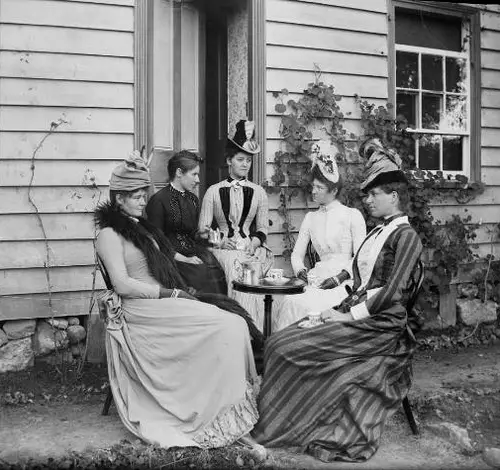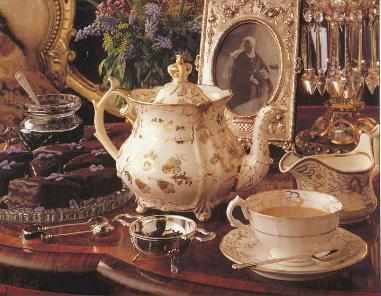The Victorian Era was an age marked by development in various fields. Inventions and discoveries were upon the world. The Industrial Age was around the corner. But still it was an age of politeness and etiquette, of chivalry and gallantry, of social gatherings and tea-parties.
Tea was the drink of the day and was served by the lady of the home to a party of a selected few.
The first European who came across tea and wrote about it was the Portuguese missionary, Father Jasper de Cruz in 1506 A.D. After its introduction to Portugal, tea was shipped to Lisbon and Dutch ships brought it to France, Holland and the Baltic countries.
Owing to the travel expenses to ship, at that time, tea cost over 100$ per pound. This made it affordable only to the wealthy. However, later on it became less expensive and available in shops and taverns and tea drinking became a way of life.

In England, Tea soon became popular enough to replace ale as Englands national drink. As in Holland and other European countries, it was the nobility that gave tea its stamp of approval. King Charles-II and his wife were regular tea-drinkers.
It was not long, before Anna, the Duchess of Bedford adopted the European tea service and invited her friends for an afternoon meal. The menu featured cakes, sandwiches, sweetmeats and of course, mainly, tea.
This proved so popular that soon this idea was copied by other hostesses and serving tea became a common practice for almost all families in England. Tea was made in a silver pot and served in the finest porcelain from China. The food was also served on fine china. This tradition soon became a rage.

Adopted from the Dutch tavern garden teas, the Englishmen improvised the idea of tea gardens. On private grounds or estates, ladies and gentlemen were entertained by orchestras, flowered pathways, concerts, games and other lavish arrangements, while they took their tea outdoors.
Women were allowed to mix freely, in public tea gardens, for the first time, without societal criticism. Even the middle classes and upper classes gathered freely, dissolving the lines of class and birth.
In the late 1880s, both in England and America, fine hotels began to offer tea service in Tea Rooms and Courts. Victorian ladies and their gentlemen would meet in the late afternoon for tea and conversation. Many of these tea services became very popular.
Also popular, was the hosting of tea dances in the afternoons, as dancing became a craze in England. This highlights the social aspect, as it provided a place for young men and women to meet.
The discovery of ice-tea is attributed to an Englishman named Richard Blechynden in 1904. On a scorching day, when people were disinterested in hot tea, he dumped a load of ice in a batch and produced the worlds first iced-tea!
English Breakfast Tea, a fine black tea, which often includes Keemun, is blended with milk. Lemon may be offered if milk is not preferred, but the two are never served together. It would curdle the milk in the tea. Then there is Oolong Tea. This elegant tea is sometimes known as the champagne of teas. Originally grown in China, it was imported to England in 1869. It is a cross between green and black teas and is fermented to achieve its delicious fruity taste.